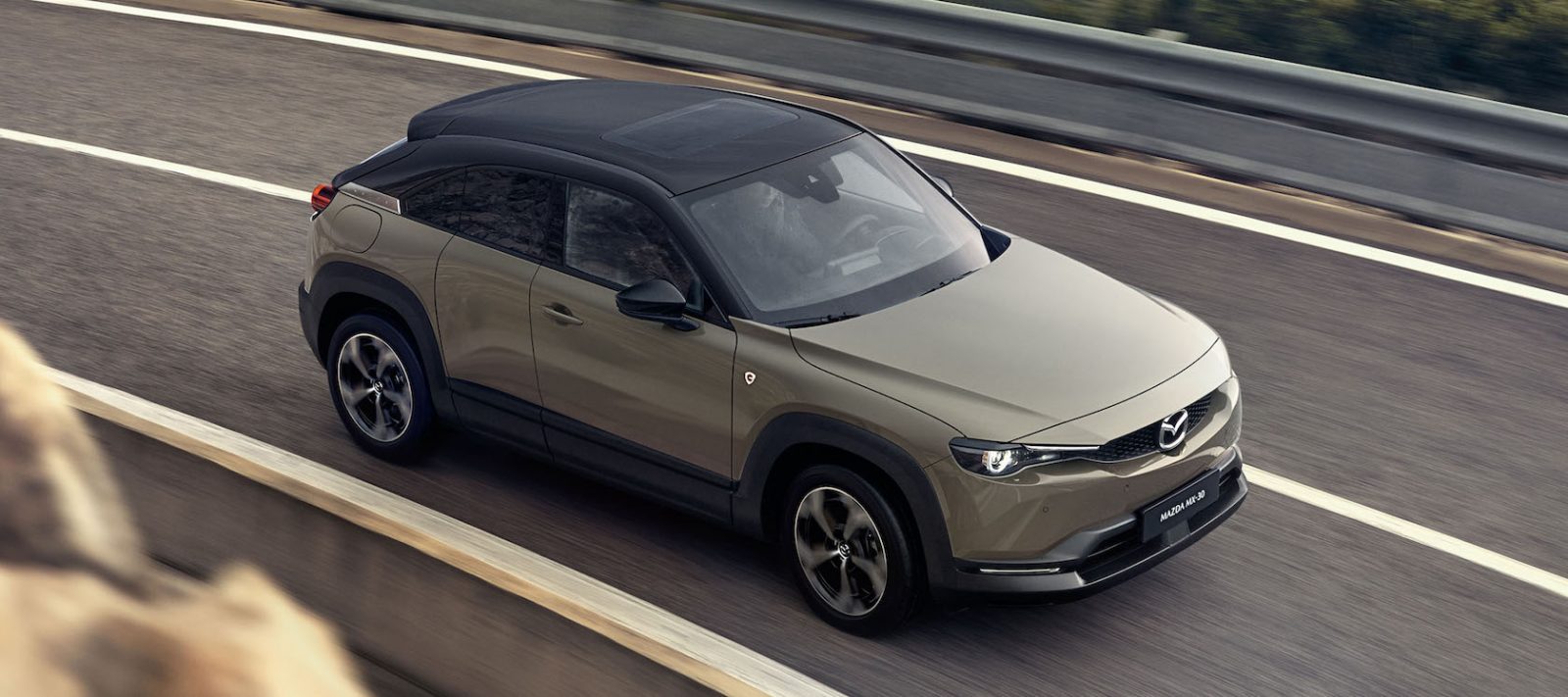- Mazda debuts new production-ready MX-30 R-EV hybrid with rotary engine generator
- According to insiders, Mazda has not given up on a rotary sports car
- A new “rotary” sports car would almost certainly employ a plug-in hybrid with rotary generator
At the Brussels Motor Show last Friday, Mazda unveiled the new MX-30 R-EV powered by a 17.8 kWh battery and an 830cc rotary engine generator combined with a series plug-in hybrid system. That’s right, the once all-mighty rotary, a power source that propelled the RX-7 and RX-8 over a couple of decades, and won the 1991 Le Mans 24 Hours race, has been relegated to generator status.
To be honest, with emissions regulations getting stricter by the year, the MX-30’s plug-in hybrid with its new rotary engine generator is a sign of the times. Such a setup is one of the only ways to utilize the compact power benefits of the rotary while minimizing emissions at the same time and making it appeal to customers as well.
But for the hundreds of engineers who entered Mazda over the years, drawn to the company hoping to work on a rotary sports car, repurposing the rotary as a generator must be like replacing the beef in a hamburger with tofu, and still calling it a hamburger.
Deep down inside, though, the brand still wants to make a rotary sports car, that’s for sure, but such a model remains a long way off even though we have seen rotary prototypes like the RX Vision concept of 2015. But then again, staffers like Yoshiaki Noguchi, assistant manager of Mazda’s powertrain development division, say, “It’s a dream of engineers at Mazda to have a rotary-powered sports car. Now is not the time for that.” He says that when the company reaches its goal of rolling out its planned electrified models, then it can start thinking about the ‘rotary’ sports car dream.
Noguchi’s quote lays out Mazda’s production goal—to electrify its core range, of which rotary hybrid plays a small but important part, but it is not ruling out rotary sports cars in the future. No Mazda staffer would ever say such a thing.
One promising aspect of the new MX-30 R-EV is that its tech is scalable and compatible with other applications beyond its 830cc single-rotor setup on that car. So there’s a strong chance we will see this plug-in rotary setup on other models in the near future. In fact, Mazda has made huge improvements to the rotary engine since the RX-8 went out of production in 2012, improving efficiency, reliability, and emissions.
Mazda now uses direct injection rather than port injection, which improves economy by as much as 25%. This in turn reduces CO2 emissions, while rotary engines have always been low NOx pollutants.
OUR THOUGHTS
So what does all this mean? If and when Mazda returns to building a “rotary” sports car, then as far as we can see, the only way that could ever happen would be for the said coupe to employ a plug-in hybrid with an electric motor and rotary engine generator. The motor in the MX-30 R-EV produces 170 hp while the single-rotor rotary generates 74 hp, making it capable of driving 53 miles in electric-only mode. We can see this powertrain being applied to a new sports car down the track, but think it would have to generate more power—at least 300 horsepower—to qualify as a sports car. To achieve that, a more powerful battery would need to be employed and perhaps we might even see a twin-rotor rotary engine return, as a generator of course, to top up that bigger battery. So, no, the MX-30 is not the last word in rotary. There is another.
